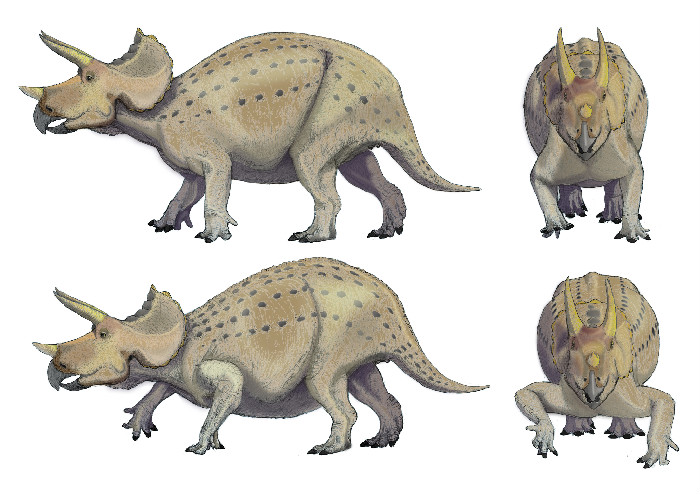Triceratops No Slouch, New Forelimb Study Reveals

The three-horned dinosaur Triceratops may have had a more upright, athletic posture than thought, new anatomical evidence suggests.
Researchers say Triceratops' forelimbs may have resembled those of a large mammal, kept closer to its body than the forelimbs of reptiles and amphibians that typically have a lower, more sprawling posture.
The key is in the elbow, according to the researchers, Shin-ichi Fujiwara from the University of Tokyo and John Hutchinson from the Royal Veterinary College of the University of London.
Hutchinson and Fujiwara knew that the bones of the elbow joint would look different depending on an animal's posture, because, for example, an animal with more-sprawling forelimbs would rely on different muscles to support its elbow than would an animal with a more upright posture. Animals, like, say a dog or an elepant, with more upright forelimbs rely on their triceps and have a prominent "funny bone" that acts as lever enabling the muscles to keep the elbow from bending too much. Meanwhile, animals, such as lizards, with sprawling forelimbs rely on muscles called adductors to pull the elbows toward the body.
By looking at the skeletons of 318 four-legged animals housed in museums, including crocodiles, birds and marsupials, the researchers found three primary measurements to describe elbow joint support, and developed an index based on their data.
They applied the index to the forelimb postures of extinct four-legged animals, including Triceratops, a type of pterosaur called Anhanguera, and a group of extinct hippolike mammals called desmostylians. All appear to have had forelimbs withupright postures, the researchers wrote in an article published Tuesday (Feb. 21) in the journal the Proceedings of the Royal Society B.
You can follow LiveScience senior writer Wynne Parry on Twitter @Wynne_Parry. Follow LiveScience for the latest in science news and discoveries on Twitter @livescience and on Facebook.
Sign up for the Live Science daily newsletter now
Get the world’s most fascinating discoveries delivered straight to your inbox.










